Oslo wasn’t always the capital of Norway. And for 300 years it wasn’t even called Oslo! Read on to find out more about Norway’s biggest city.
The Oslo of today is every bit a modern European capital. The population is increasing rapidly and tourism numbers have never been so high. So a successful city today, but Oslo's history has had many ups and downs.
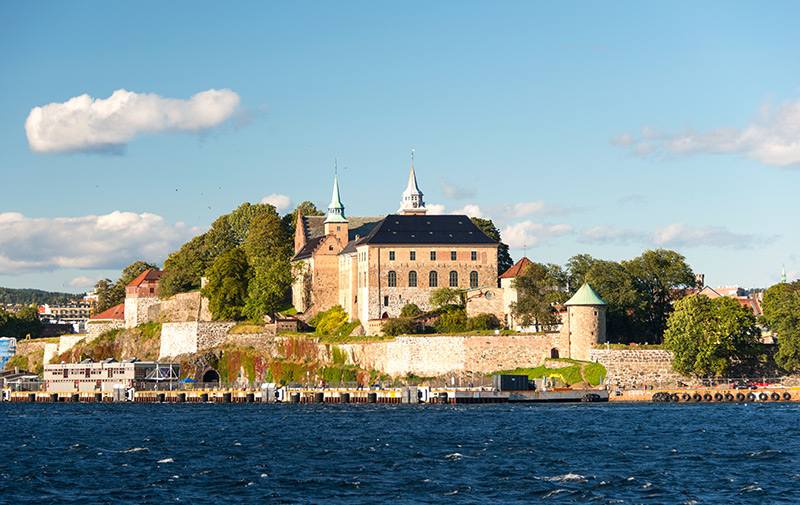
The history of Oslo stretches back to the start of the first millennium. The first mentions in Norse sagas date to 1049, but there is evidence proving a settlement existed earlier.
Becoming the country's capital
Archaeologists have discovered graves that indicate there was a settlement in the area around the year 1000, possibly earlier.
According to the Norse sagas, the establishment of the city occurred in 1049 when King Harald Hardrada made it a designated Kaupstad or trading place.
During the reign of Olaf III, Oslo grew to be an important cultural centre for the East of Norway. In 1070, the city was elevated to a bishopric. In 1174 a Cistercian monastery was built on the island of Hovedøya in the Oslofjord. The remains can be visited today.
Much of the city was owned by the church. Christianity was a strong influence in building the city and its importance.
In 1299, when King Haakon V came to the throne, he chose to reside in the city. Haakon had previously been Duke of Norway and had the city had formed his power base. So Oslo succeeded Bergen as the capital of the country.
Read more: A Brief History of Norway
The King started the construction of the Akershus Fortress across the fjord to the north-west of the city. This was to fortify the city against invasion by Swedes from the North-East.
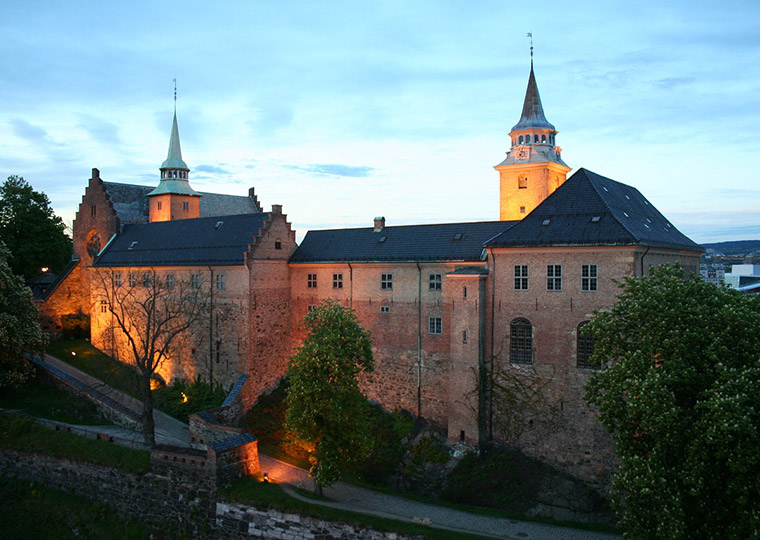
Losing its status
Tragedy struck the city in 1349 when plague in the form of the Black Death arrived. Half of the city's 3,000 residents died. The church, suffering a loss of income, started to decline. The Hanseatic traders who had started to arrive in the 12th century grew in importance.
Less than 100 years after becoming the capital, Oslo lost its status when the country entered into the Kalmar Union with Denmark and Sweden in 1397. The official capital was Copenhagen and Oslo was relegated to being just another city.
After the breakdown in the Kalmar Union in 1523, the city was briefly capital once more until 1536. Norway and Denmark entered into a personal union and the newly created Denmark-Norway chose Copenhagen as its capital.
The former name of Oslo
What's in a name? The name Oslo, also styled Ánslo, Áslo, Óslo or Opslo has a disputed origin. The name comes from Ás and lo. The lo part is easy – that’s a field, meadow or pasture. The Ás is the tricky part. It could derive from Old Norse Áss meaning Godhead – derived from the Æsir – to give ‘meadow of the Gods’.
The problem is that Ás in this form isn’t common in place names. Much more common is Ás meaning ridge or hill and so many scholars prefer ‘meadow beneath the ridge’ as the likely origin. The ridge in question would likely be the Ekeberg ridge to the southeast of the old town.
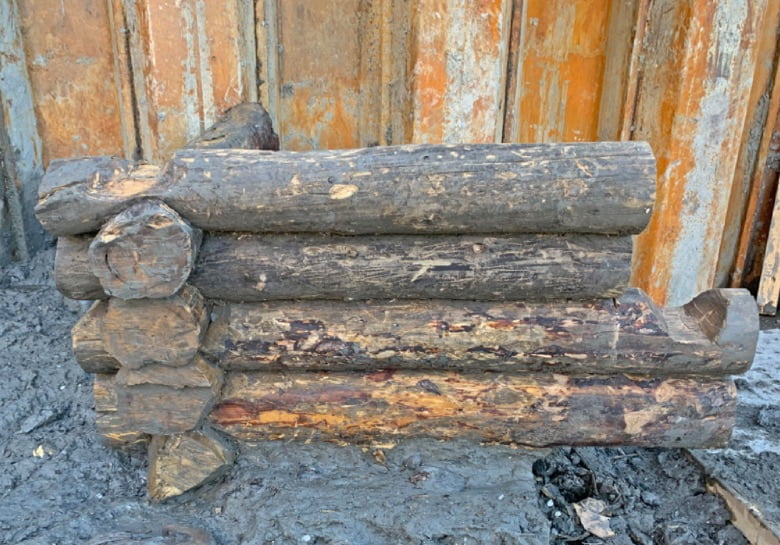
Like many cities of the time, Oslo was made mostly of wooden buildings. As such, fires were a fairly common occurrence. In 1624, a devastating fire raged for three days, burning the entire city to the ground. Rather than rebuild again, King Christian IV of Denmark decided the city should move across the fjord and be rebuilt closer to the Akershus Fortress.
There was such resistance to this move that the King himself travelled from Copenhagen to impose his will on the people. The new site was outside of the limits of the city of Oslo and so Oslo was no longer. Instead King Christian decided the city would be called Christiania as he was clearly a humble fellow!
Read more: Archaeologists Discover Oslo Quayside from Late Middle Ages
The new city was also to be made entirely of brick and stone to prevent the city being razed by fire again. This led to huge inequalities as the rich lived in splendid safety in their brick buildings while the poor lived outside the city in wooden houses in Vaterland and Grønland. The area vacated by the city is what’s now known as Old Oslo or Gamlebyen.
Christiania’s renaissance
In the early 18th century, the Great Northern War raged between Sweden and an alliance of Russia, Denmark-Norway and Saxony-Poland-Lithuania. The war was about supremacy in Northern Europe and influence on the Baltic Sea.
Through the war various other parts of Germany, and even Great Britain, joined in with the result that Sweden was defeated, and Russia gained powerful control of the Baltic for the first time.
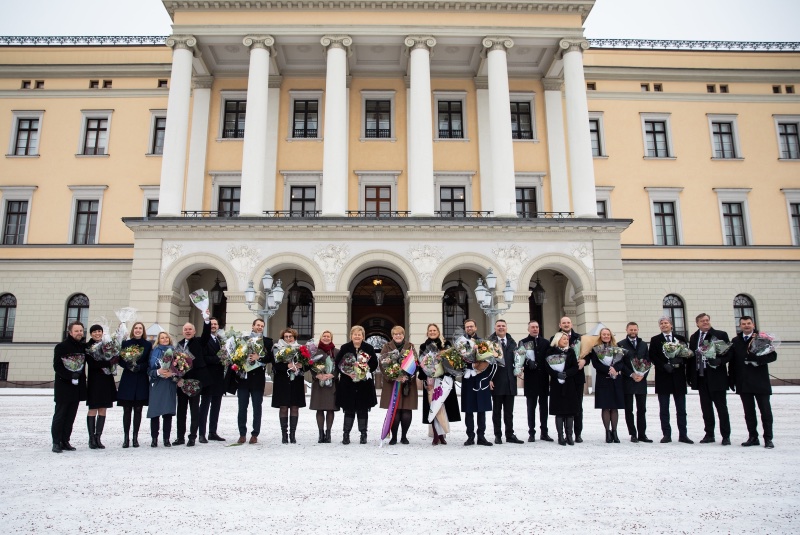
All of this led to Christiania becoming a booming city thanks to shipbuilding and trade. Building its reputation as a trading city, Christiania thrived. The most important trade partners were Great Britain and the Netherlands who had vast trading networks all the way around the world. This allowed products such as coffee and tobacco to find their way to Norway.
It wasn’t all plain sailing, however. In 1716, Swedish King Karl XII invaded Christiania. They too the city easily though the authorities managed to escape. After six weeks of fighting, Akershus Fortress still stood firm and, though the King’s troops plundered the city they couldn’t take over completely and, eventually, they withdrew.
Christiania is the capital once again
In 1814, the city regained its status as capital of the independent Kingdom of Norway. Denmark had to cede Norway to Sweden according to the Treaty of Kiel. This wasn’t a popular idea but the two countries entered a somewhat forced personal union after a short war.
The main difference was that they were to keep their own laws and customs. And, as such they would have their own capital city – Christiania.
Throughout the 19th century, celebrating its return to capital status, the city built many of the institutions of government that are still in place today. The Bank of Norway (1828), the Royal Palace (1848), and the Storting (1866) were all constructed.
The city limits also expanded greatly during this period. Larger parts of the Aker municipality were incorporated and in 1859 the city of Christiania finally incorporated Oslo, the old site of the city that had been abandoned by Christian IV but continued as a village by many of the original residents.
In 1877, the city underwent another, minor, name change. Official spelling reform in Norway changed ‘ch’ to ‘k’ and so Christiania officially became Kristiania. Official documents changed but the city itself took 20 years to get around to changing formally.
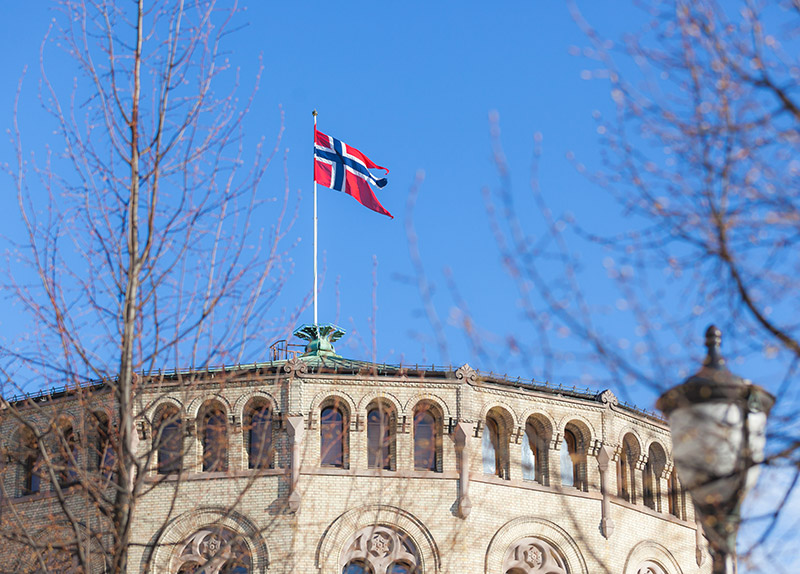
Oslo’s back, tell your friends
The 20th Century was an important time for Norway. In 1905, the personal union with Sweden was dissolved amicably and Norway finally became the independent state that we know today.
Many residents of the city felt that a name honouring a Danish king, that had nothing do with the history of Norway was inappropriate for its capital. In 1918, civil servants proposed a name change to Oslo. The move wasn’t unanimously popular however. The newspaper started a petition that gained 28,000 signatures against the proposal.
Read more: Norway in World War II
The main objection was summed up by the novelist Sigrid Undset who wrote that she would be ashamed if the city would try to cheat and pretend to be its predecessor on the other side of the Aker river. Nevertheless, the government pressed ahead with the change and Kristiania officially became Oslo on January 1st 1925.
A peaceful city
Swedish chemist and inventor Alfred Nobel established prizes for advances in the fields of Chemistry, Literature, Peace, Physics, and Physiology or Medicine. The prizes were first awarded in 1901. All are awarded in his native Sweden except for the Nobel Peace Prize.It was Nobel's wish for that specific prize to awarded in Oslo.
No one knows for sure exactly why he chose to honour ‘peace’ with a prize. Nor is anyone sure why he chose Norway to bestow the award.
The Norwegian Nobel Committee believes that it was his friendship with peace activist Bertha von Sumner which led him to choose Peace as a prize. Other scholars argue that it’s likely his way of making amends for inventing dynamite – a substance responsible for a great deal of violence and death during his lifetime.
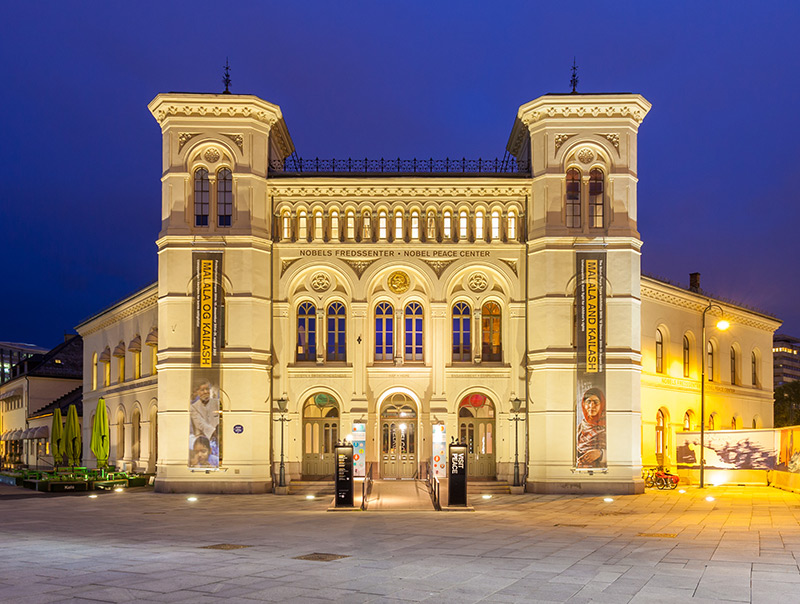
As for Oslo being the seat of the Peace prize, many believe it was down to Norway’s commitment to peace and conflict resolution as opposed to the more militaristic tendencies of his native land. Regardless of his reasoning, The Nobel Peace Prize is a proud part of Oslo’s recent history and a trip to the Nobel Peace Center is a must for any visit to the city.
A city of culture
Like most countries, not many of Norway’s best known people actually hail from the capital. One of Oslo’s most famous sons, Edvard Munch, was actually born in Løten though his family moved to the city when he was one year old when his father Christian was appointed medical officer at the Akershus Fortress.
Munch went on to paint many works throughout his life including one of the most recognisable in all of art, The Scream.
There are four different versions of The Scream, three of which are owned by Norwegian museums. The iconic image is widely interpreted as relating to man’s anxiety in the modern age. Munch’s stated goal was “the study of the soul, that is to say the study of my own self”.
In terms of music, we have two of Norway’s most important exports. Firstly, a-ha were formed in the city in 1982. Keyboardist Magne Furuholmen and Guitarist Pål Waaktaar (now Paul Waaktaar-Savoy) were from the city while lead singer Morten Harket was from nearby Kongsberg. a-ha went on to have global success and are one of the most famous bands ever to come out of Norway.
No less important, though less well known outside of certain circles, the Black metal band Mayhem formed in Oslo. After the death of their lead singer, Dead, guitarist Euronymous opened his record shop Helvete and record label Deathlike Silence on Schweigaards gate in the city.
Learning more about Oslo’s history
There are a number of places to visit if you want to find out more about the history of Oslo. Kvadraturen is the area where King Christian IV decreed the new city of Christiania would be built.
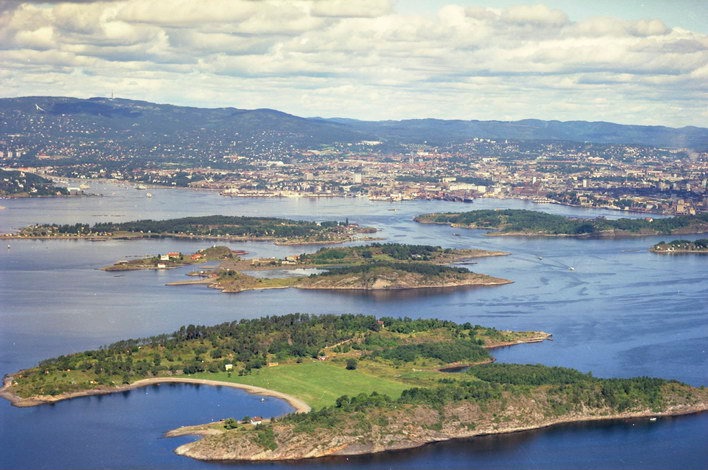
There are still a few buildings from the time standing including the city’s first town hall and its oldest café, Engebret. In Christiania torv, the town square, there’s a fountain with a sculpture of a hand pointing to the ground. This is reportedly where the King pointed when he said ‘the new city will be built here’.
Akershus Fetsning, or the Akershus Fortress, is the perfect place to discover Oslo’s history. Completed in the early 14th century, the fortress kept the city safe during various invasions and sieges over the years. It is now also the site of the Norwegian Resistance Museum, documenting Norway’s resistance during World War II.
The Viking Ship Museum on the Bygdøy peninsula has some of the world’s best-preserved Viking ships and finds from the Oslofjord area. The museum also screens the film The Vikings Are Alive throughout the day.
One ticket will also get you entrance to the Museum of Cultural History on Frederiks gate, which hosts permanent and changing exhibitions that showcase items from Middle Age Norway as well as items brought back from expeditions around the world.
In Gamlebyen (Old Oslo) you can find ruins of some of the pre-Christiania buildings including churches. At Oslo Ladegård’s Medieval Office you can learn more about Oslo in medieval times or pick up a guided tour of the ruins.
Finally, the Museum of Oslo shows the city’s development and history through paintings, photographs and models. There’s also an augmented reality app that allows kids to play a historical detective game in the museum. The app also brings things fully to life in an exciting way.
Have you visited any of Oslo's historic sites? Let us know in the comments!
If you enjoyed this article, why not share it on Pinterest so that others can find it too? We've got just the pin for that:
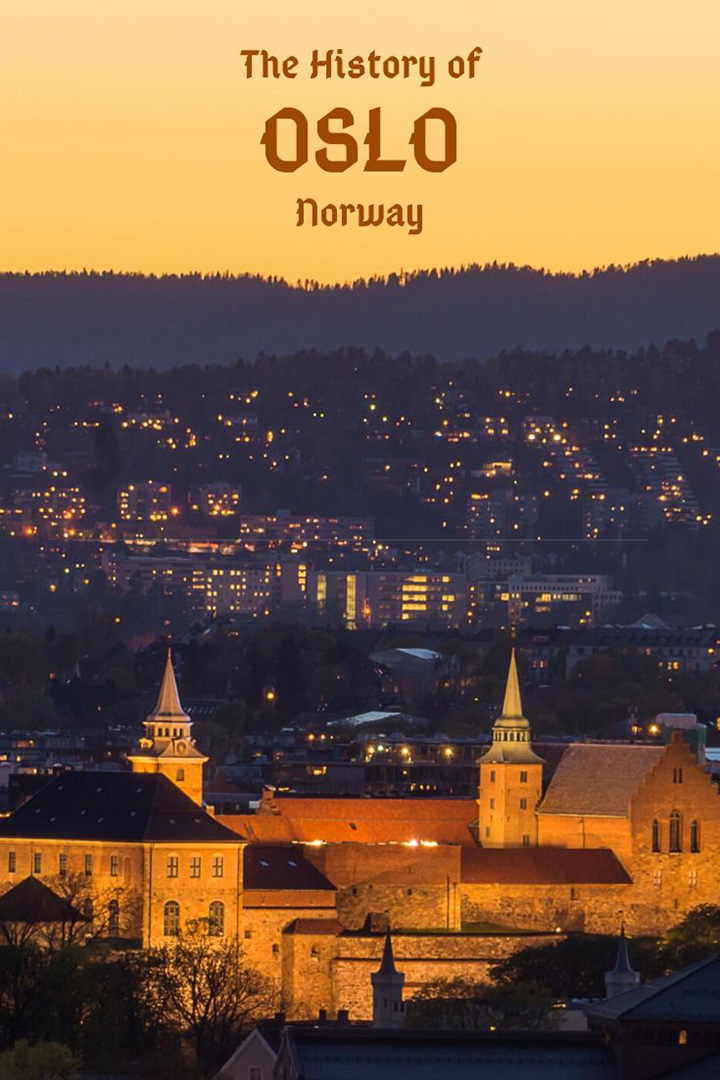





Visited Norway in 2005 (seems like yeaterday), most memorible part of Oslo that we visited was Frogner Park. My wife loved it so much that we stayed too long to visit the Viking Ship Museum.
Absolutely fascinating history! As a student in Germany long ago I hitched hiked in Norway reaching as far as Trondheim. I also visited Bergen and Oslo. A lasting memory is the friendliness and kindness of Nowegians!
I read the entire article, enjoyed it. I visited Oslo, Norway in 1980, 1986 and will if I can 2021.. thank you. Stay well.
We took the “Norway in Nutshell” tour in 2014, beginning in Oslo and travelling by train and steamer ship to Bergen and back to Oslo. The Sognefjord and Hardanger Fjord were breathtaking! We spent a few days in Tonsberg, visiting with several of my cousins, who took us on their boat on the Oslo Fjord. Walked around Oslo’s City Hall but it was closed. Beautiful frescos on the exterior.
I enjoyed the article. Didn`t know much of that even though I was born in Norway. Took my children there in 1978 and 1988. The first time I forgot my purse on the bus, was able to trace the bus to the station and went to pick up my purse. It was still and nothing was missing! The second time we went to Frognerparken and the Viking Ship Museum as well the Kon Tiki and the Fram exhibits. My children loved it!
The first time I visited Oslo was in 1955 when I was 10 years old. My mother and I sailed from the USA on the Oslofjord. My mother’s aunts and uncles from Brevik, Porsgrunn, Skien and Oslo met us with flowers. Both of my parents were born in Brevik. We went to the apartment building in Oslo to stay with an aunt and uncle for about a week. We visited so many cousins on both sides of my family. The second trip I was in Oslo was 1968 this time I was staying with my paternal cousin living in Horten and we went to Oslo for the day to go sightseeing. City Hall, Holmekollen, Frogner Park etc. The third time I was in Oslo was in 1985 with my husband and 2 sons (10 & going on 12). We stayed in the youth hostel in a university dorm. We took our sons everywhere! The first full day was a Sunday and we met my Brevik cousins with their families at Akershus. First we attended church service in the chapel followed by touring the fortress. We all enjoyed the resistance museum! The kids climbed on the cannons. The fourth time was in 1997 my husband and I were on a Telelaget trip. We were also there in 2015 and 2017. We usually stay with family or the last time we made hotel reservations for our entire trip. In Oslo we have stayed at the Thon Opera Hotel in 2015@and 2017 which is located across from the train station-so convenient when traveling by ourselves!! As you can see, we love Norway and belong to several Norwegian organizations plus church here in Minnesota ( also in Chicago which was our hometown until 8 years ago) 🇳🇴🇳🇴🇳🇴❤️❤️
I visited in 2015 and 2016 when I discovered my second cousin on Facebook. It was delightful to finally meet relatives. My dad never visited his homeland as he was born here. Such a shame as he would have lived it. He thought he was from Bergan but he actually descends from mor og Romsdal in a little town called Rod. My maiden name is a derivative, Rode, but it may have been slightly changed when my grandmother came to New York. His mom wanted all the children to be truly American. She never went back never spoke Norwegian and raised all 7 children mostly by herself as my grandfather died when my dad was 3. I’m fascinated by my Norwegian roots and hope to visit again in a few years. Norway is the most beautiful land in the universe!
My grandparents immigrated from Oslo and another great grandparent from Loiten. I have been to Norway 3 times and wish I could go back again. It is a beautiful country and I’m proud to be a Norwegian! I have since discovered some cousins on both sides of my family. Thank you for this article. I love learning about my roots and where ‘I come from’.